The peak bloom period for the flowering cherries on the national mall is predicted to be March 29 through April 3. I expect that there’s already significant bloom along the Tidal Basin, but the peak is a week away. Cherries in the outer suburbs will be a week to ten days later, and in my garden only the early flowering ‘Okame’ will bloom within the next two weeks.
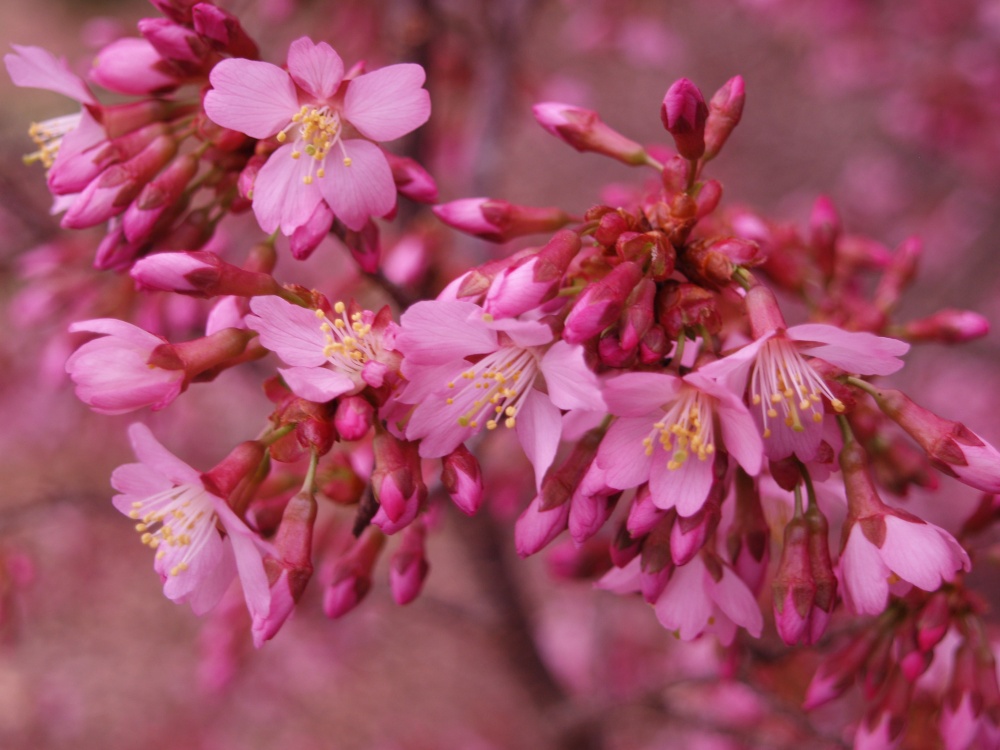
There has been an odd year or two when ‘Okame’ has flowered in early March in my garden, and then the blooms are in danger of being damaged by freezes. The start of the third week is the more likely time for their blossoms, and the temperatures rarely stray low enough to be harmful this late. ‘Okame’ is an excellent tree for the moderate sized property since it does not spread nearly so wide as the more common ‘Kwanzan’ and ‘Yoshino’, and the early blooms are welcome. 
The buds of ‘Dr. Merrill’ and ‘Royal Star’ magnolias are a little behind this spring, and just now are beginning to open a wee bit. The magnolias will sometimes bloom the first week of March, and the large flowers are more susceptible to damage than the cherries’. The shrub-like ‘Royal Star’ is more often injured by cold, with the blooms of ‘Dr. Merrill’ unharmed only a few paces distant, but I shouldn’t make so much of this since in most years neither suffers at all. ‘Jane’ and the yellow ‘Elizabeth’ bloom another couple of weeks later, and rarely have a problem with the cold.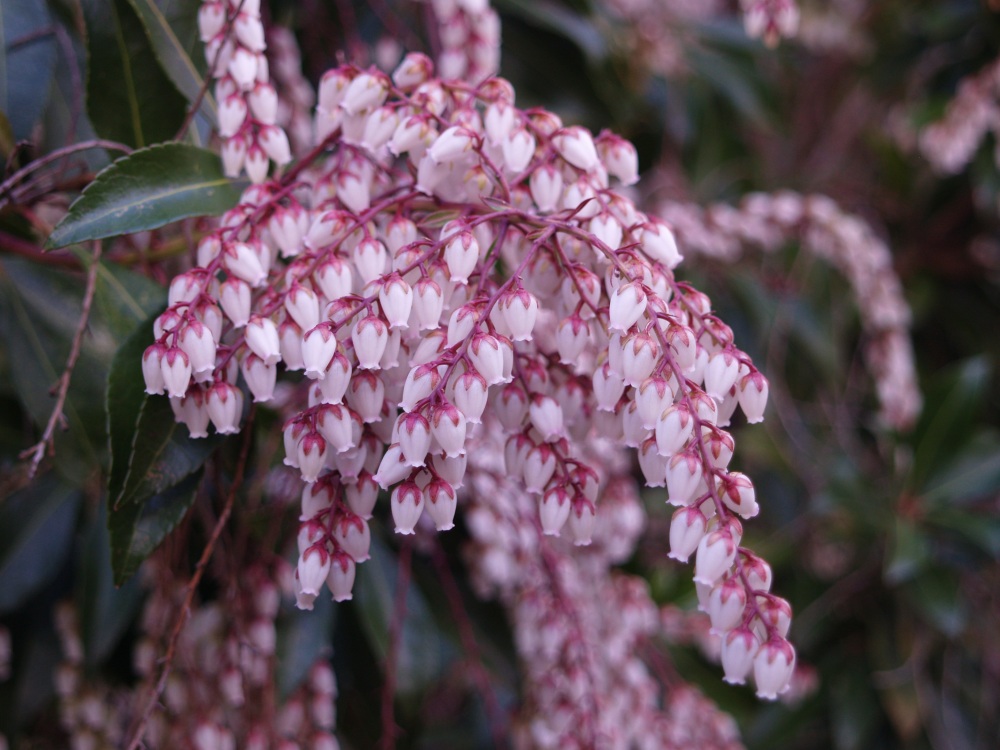
The handful or two of deer resistant Pieris (Pieris japonica, above and below) cultivars in the garden are not bothered by cold at all, with some beginning bloom early in March and persisting into April. A few were planted twenty years ago, and as so often is the case, I have forgotten their names. A few I recall.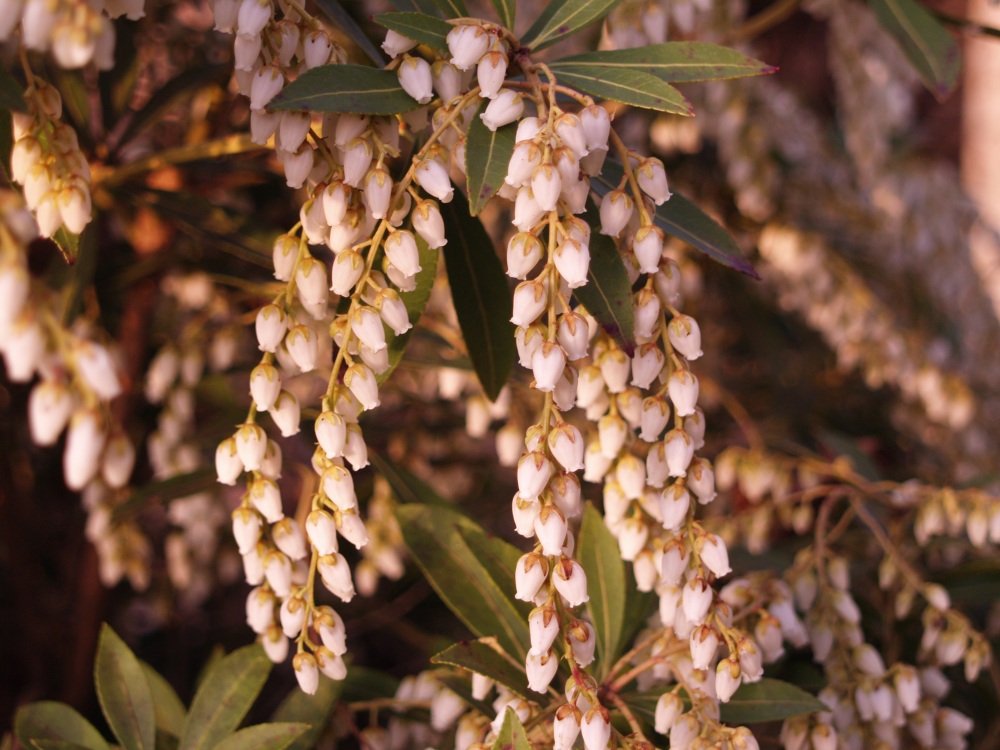
The brightly colored variegated leaves on the title banner of this page are ‘Flaming Silver’, a decided improvement over the old ‘Variegata’, but still a magnet for lacebug and the only pieris I have that suffers any significant insect problems. The low, compact growing ‘Cavatine’ is later to flower in April, and its foliage is an undistinguished, drab green, but it is delightful in bloom, carefree, and more adapted to a range of soils. Pieris can be very touchy with damp or poorly drained soils, and ‘Cavatine’ is certainly the most forgiving. ‘Scarlet O’Hara’ and ‘Dorothy Wycoff’ are also undemanding, but the common ‘Mountain Fire’ is probably most troubled by soil moisture.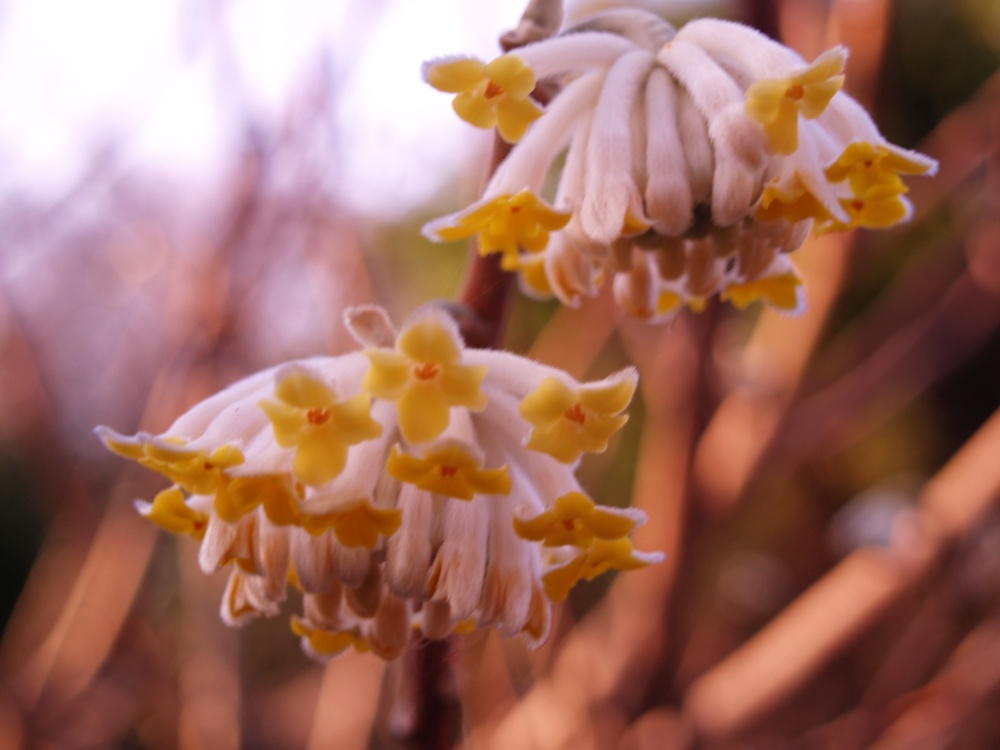
The Oriental Paperbush (Edgeworthia chrysantha, above) has become one of my favorites, not only for the yellow tipped tubular flowers that droop from its bare stems beginning in mid-March. The rhododendron-like blue-green foliage forms a lush canopy spring through autumn, and in November the flower buds first become apparent, teasing that winter is nearing its end as they swell through February.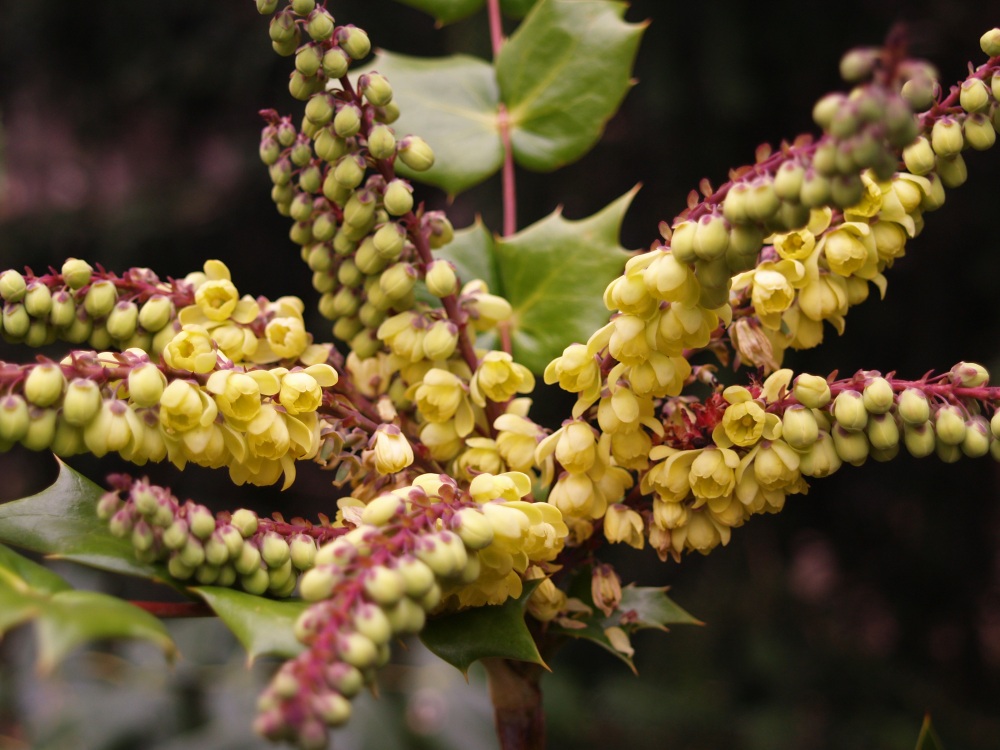
Leatherleaf mahonia (Mahonia bealei, above) will often begin to show a glimpse of color late in February, but its cheerful yellow pannicles light up the garden through March, and are followed by small grape-like fruits that birds adore. Leatherleaf has a bit more open habit and is more coarsely textured than the late autumn blooming ‘Winter Sun’, but both are sturdy evergreens with vicious sharply spined leaves. They are best suited to light shade, but will tolerate a range from full sun to shade.
Love the photos!
It’s a breath of spring Here in eastern PA I am confronted with yet another blanket of ice and snow!
Blooms in my garden are well behind those closer to Washington, and a bit slower than my sunnier neighbors, but I’m happy that spring flowers have arrived, even if the weather seems to be turning for the worst.
Last week I put a truck load of compost on my upper gardens only to wake to snow and ice! It still has all melted :(. If you have a moment check out my garden pictures at
theirisandthelily !!
Beautiful close-ups! Would love to “walk” through your garden!